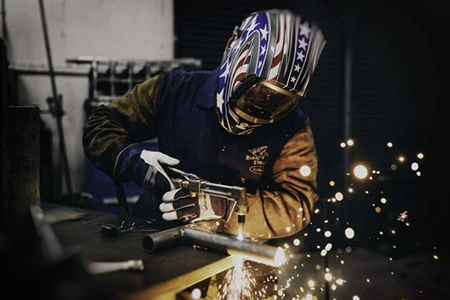What is Hot Works?
Hot Work is an activity that involves the application or generation of heat during its implementation. Such activities include cutting, welding, brazing, soldering and using blow lamps. Whilst you would expect this on building sites and at large industrial workplaces, it can also relate to repair work carried out by contractors, such as plumbers and roofers, in smaller commercial and domestic situations.
British Standard Institute definition of hot work (BS EN 9999)
“Any procedure that might involve or have the potential to generate sufficient heat, sparks or flame to cause a fire.”
Britannia Hotels suffered a fire at their Aberdeen property started by repair works on the hotel’s roof. The repair works involved workers using a blowtorch to weld layers of waterproofing to repair a leak. Unfortunately, Britannia has now had to claim against their insurers, who have stated that Britannia’s claim was invalidated due to the fire being started by repair works,
Hazards
While the potential for fire to start from a hot work activity may seem clear, some potential hazards may not be so obvious.
Fire can also easily start by:
- Sparks can pass through cavities or openings in walls or floors, potentially igniting combustible material they land on. Working at height can be particularly hazardous as sparks spread further.
- Conduction: Heat created in one place can start a fire in another due to heat conduction. For example, hot work on pipes or metal frameworks in one room might ignite fuels or materials in another.
- Explosion: There is a risk of explosion if working with gases such as acetylene or propane or in a flammable atmosphere with combustible dust, such as sugar, flour or wood.
- Burns: There is an associated risk of a person suffering burns when carrying out hot work
How to Safely Manage Hot Works
Initially carrying out a risk assessment of the work to be carried out to determine the level of risk will help to identify if further action is required to ensure the risk of fire is managed.
The Health and Safety Executive (HSE) states that a hot work permit might NOT be required only when the work is ‘low risk.’
If you determine that the work being carried out at your premises is not low risk, then the next step would be to issue a hot work permit to your contractor.
The person who issues a permit must be deemed as being a ‘competent person’. This means someone who is suitably knowledgeable in hot work processes and has the relevant training and experience to understand the risks involved. If you are a business or organisation hiring a contractor to do hot work, you must ask if they have a valid hot work permit. You also need to check with your insurers as they may not cover any damage created due to hot work where a permit has not been issued.
Part of the permit process is to have a fire watch. This is a period, usually 60 minutes, where a designated individual (not normally the person carrying out the work) is responsible for monitoring the work and surrounding areas for an outbreak of fire. They should be competent enough to attempt to extinguish fires in their early stages without putting themselves or anybody else at risk.
For more information regarding hot work processes and insurance, this News & insight page from Zurich gives more details.
